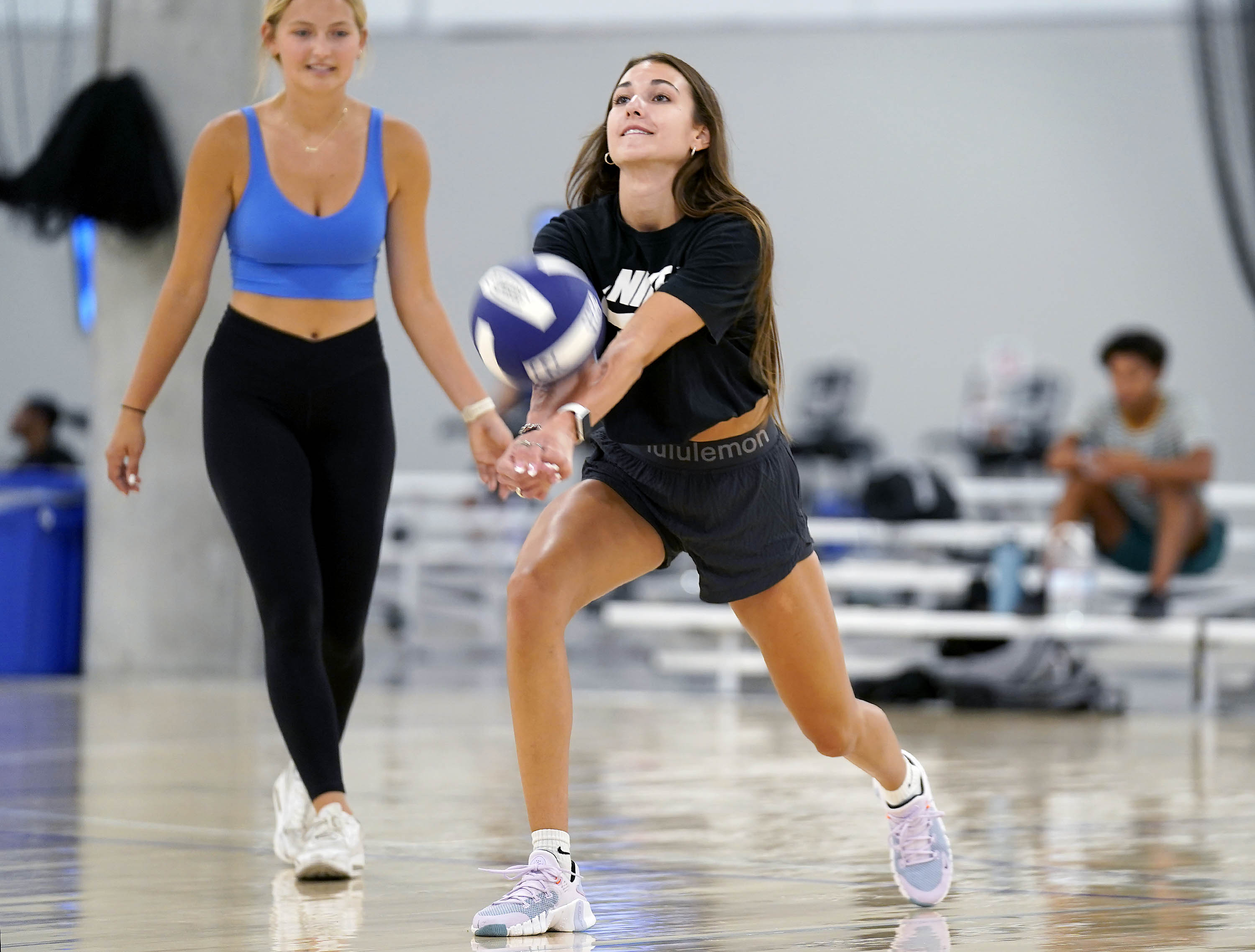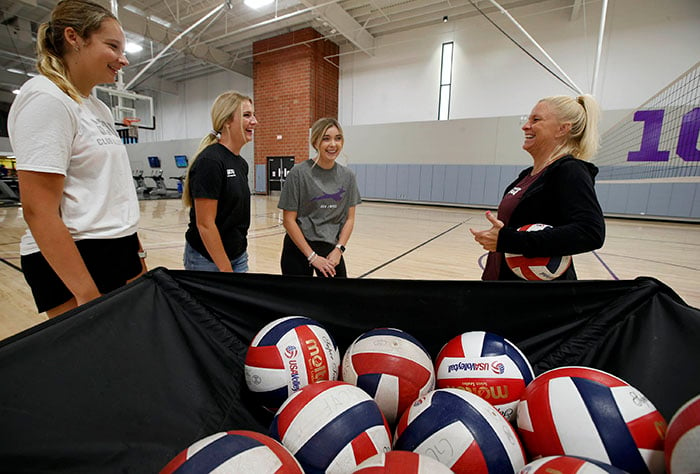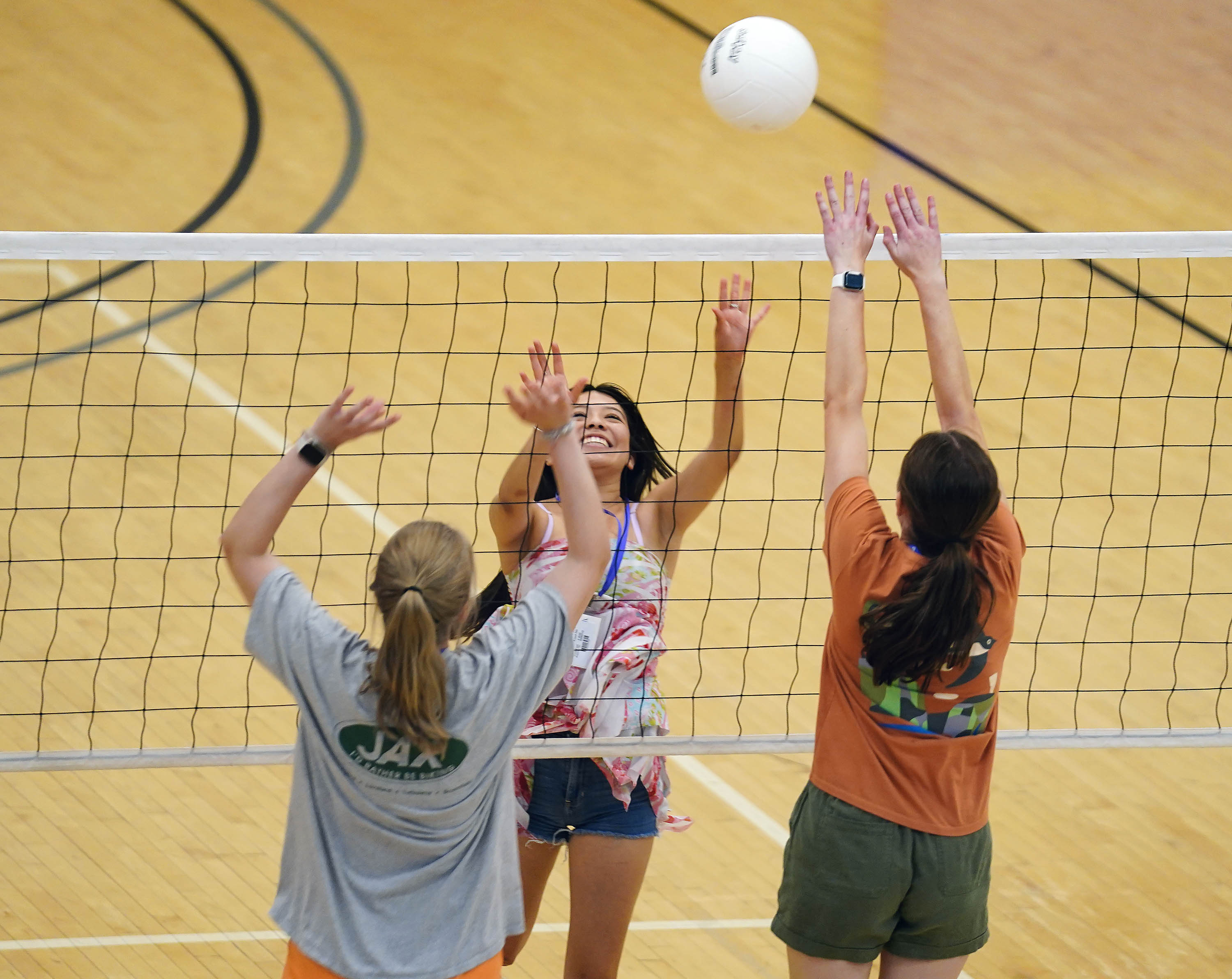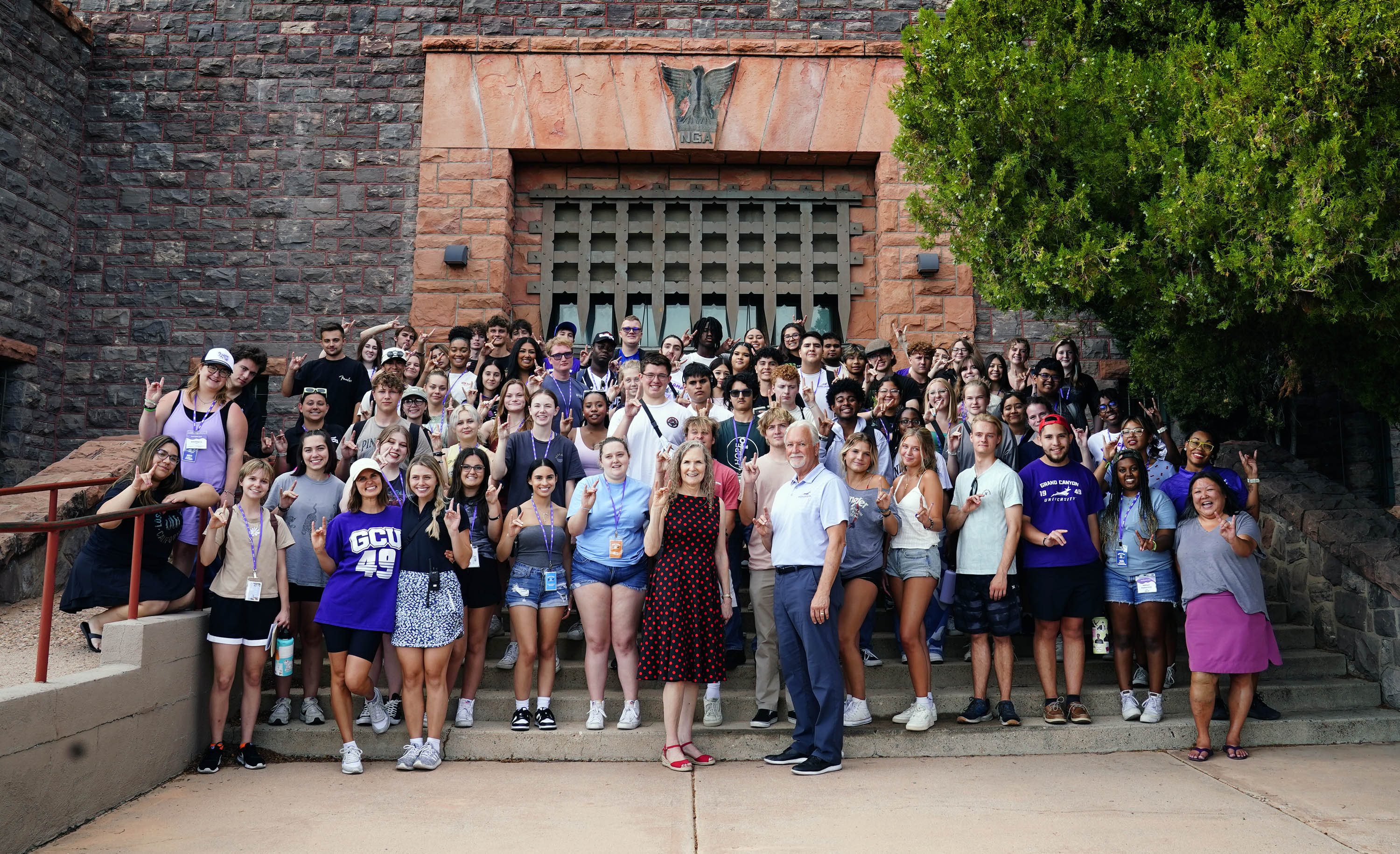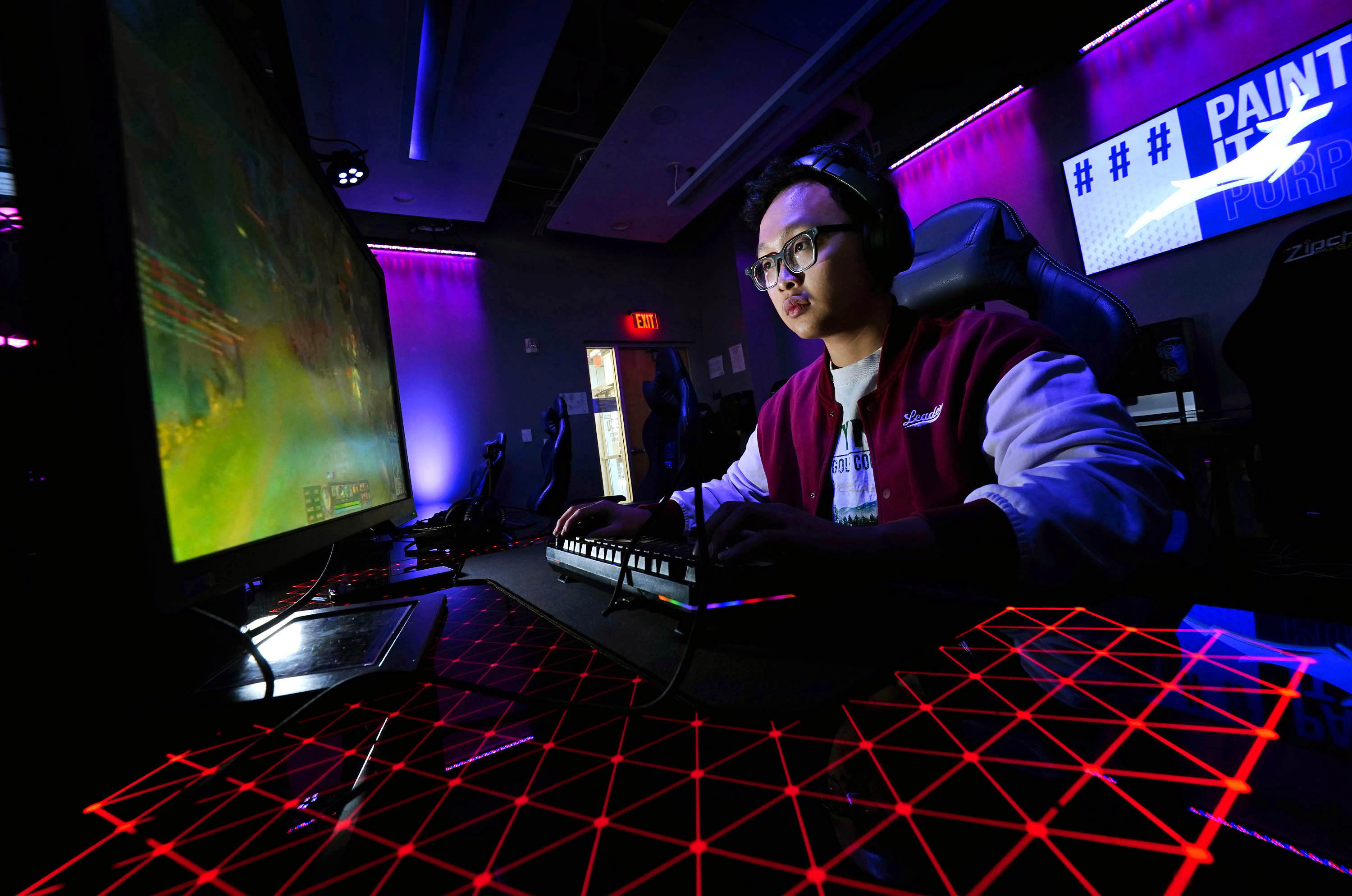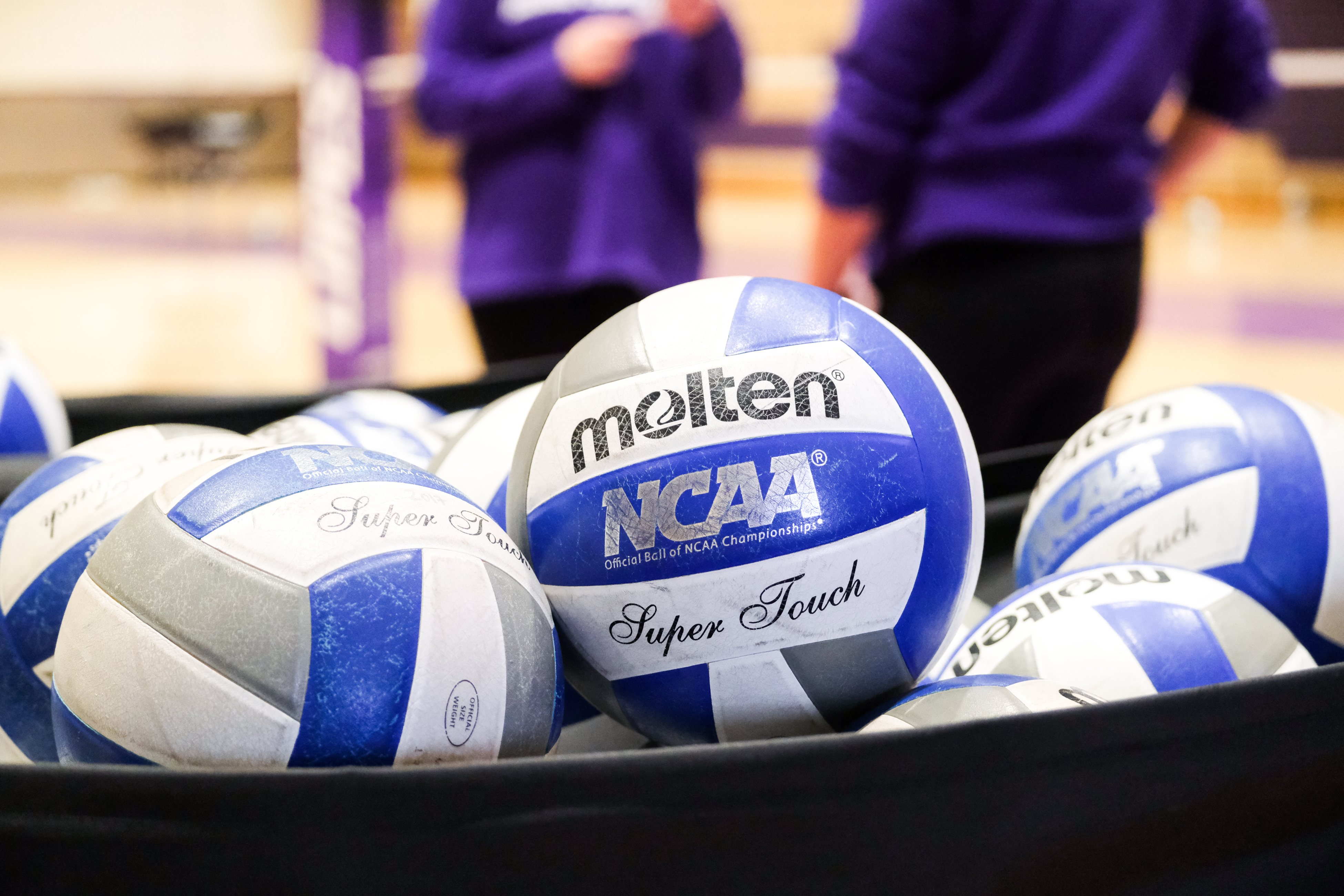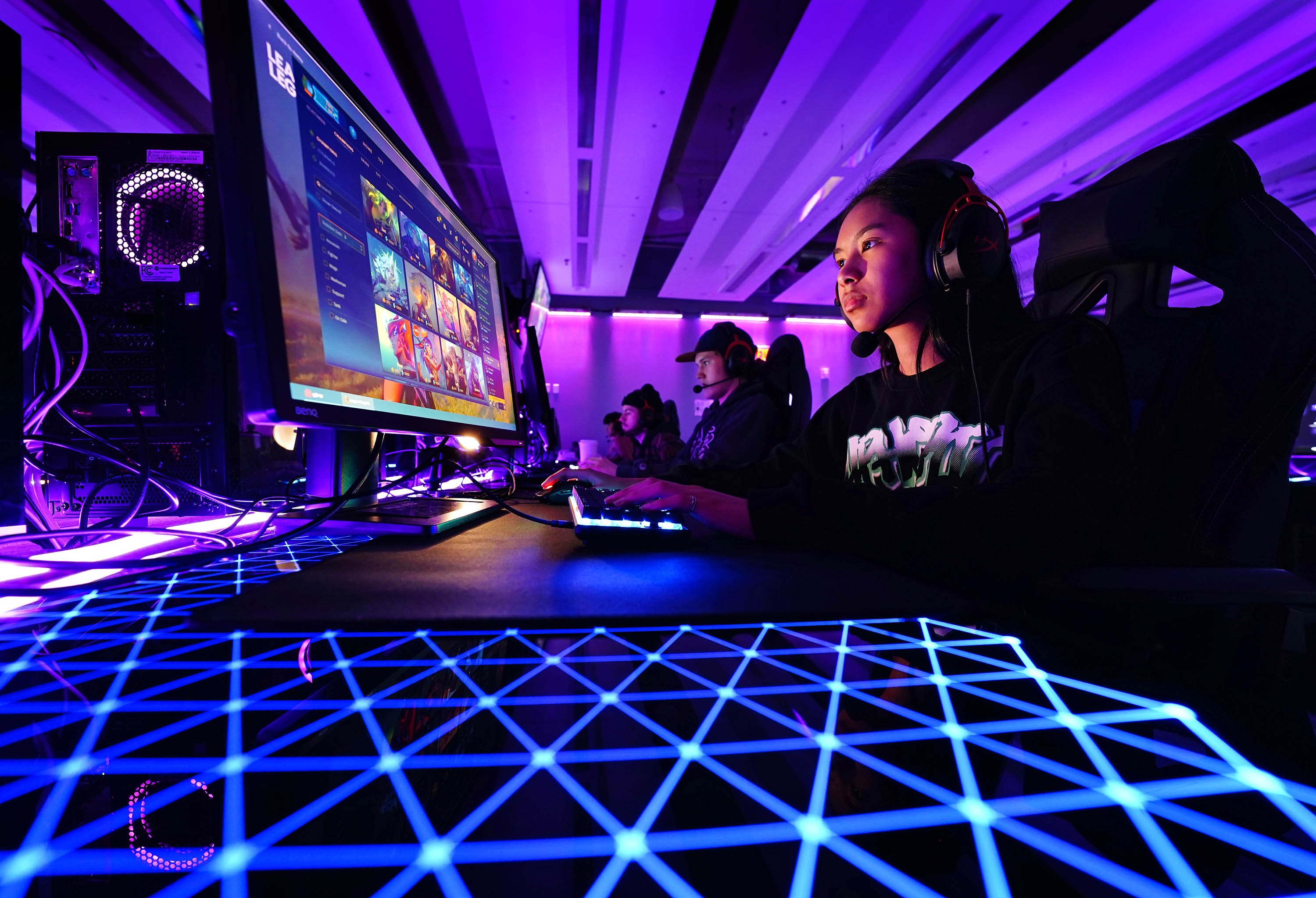
Seventh in a nine-part series on GCU academics
Story by Lana Sweeten-Shults
Photos by Elizabeth Tinajero
GCU News Bureau
Jeanette Schreacke, in her purple scrubs, scoots past concerned dad Ben Tyler, her eyes focused on her 1-year-old patient.

“He has a heart rate of 112. His temperature is 38.3 degrees Celsius (100.94 degrees Fahrenheit),” Madison Wetherell reports in quick clips over the phone. Then she listens to the doctor on the other end of the line and confirms what she’s heard: “You said 164 milligrams?”
After a few more minutes of assessment, Schreacke tells Dad, “We’re going to give you Tylenol for the fever.”
Then the exercise ends.
Schreacke and Wetherell, third-level students in the Bachelor of Science in Nursing degree program in Grand Canyon University’s College of Nursing and Health Care Professions, then make their way to the debriefing room, where immersive simulation facilitator Lynn Sapp is waiting, a screen of videos behind her to recap what just happened in the college’s third-floor immersive simulation lab.
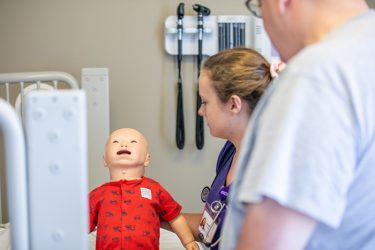
It hasn’t been long since Schreacke, Wetherell and their fellow nursing students began interacting in the lab with real, live actors. As a standardized patient – an actor who portrays a patient or a patient’s family member or other loved ones in realistic medical scenarios – Tyler and other actors like him are helping train the next generation of nurses.
This summer marked the first time the college has used actors in simulations. Students previously trained only on patient-care mannequins or relied on nursing faculty stepping in as patients.
Four actors this summer – all of them GCU students -- breathed in, breathed out.
Coughed.
Sneezed.
Described this pain and that.
And this fall, actors from the community have been added to the standardized patient roster to do the same -- bring life to scripts written by faculty.
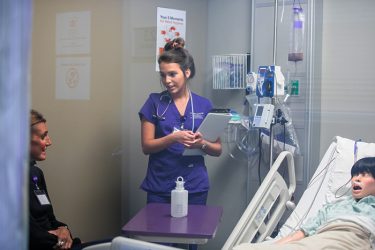
The inclusion of standardized patients -- six of them this fall -- will help students use clinical reasoning to critically think through patient scenarios that replicate real-world situations, said College of Nursing and Health Care Professions Dean Dr. Lisa Smith.
This semester, the undergraduate program simulations will include standardized patients, with the advanced programs also adding actors this fall. Plans are for the Acute Care Nurse Practitioner program to begin using SPs in simulations this month and the Family Nurse Practitioner program to start using them in October.
“We get a lot of positive feedback from students that standardized patients add a new dimension to it,” said Denise Matus, immersive simulation facilitator for the college.
For example, Matus said, “How often are you going to walk into a hospital room and find the patient lying there? You’re not. There’s going to be the family member that tries to pull you a certain way or not – so they really enjoy that aspect, and that can add a lot of psycho-social dynamics to it.”
Tyler, an actor, director and writer in Phoenix theatre for three decades, has been working as a standardized patient for a little more than a year at Midwestern University and now at GCU.
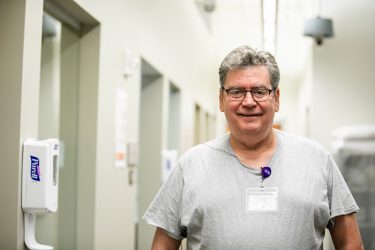
As a standardized patient and as a stage actor, Tyler said, “You have dialogue, you have to know the scene, you have to play the role,” but what’s different is, “I feel like we’re doing good for the student.”
GCU theatre major Brandon Brown feels the same – that, rather than acting to entertain, standardized patients are acting to help students become better nurses and ready them for their professional careers.
On most days in his theatre studies, Brown can be found on the Ethington Theatre stage, but these days all the world’s a stage – well, the simulation lab has become one of his stages. Often, his fellow acting partner is a high-tech mannequin, and his audience is a nursing instructor. He might portray a patient. Or he could take on the role of a loved one who is interacting with the nursing students, while the mannequins – they’re as realistic as possible; they blink, they breathe – often serve as the patients.
One big difference for Brown in going from the theatre stage to the simulation lab is that, despite the scripts, “Obviously, they (nursing instructors) don’t know what the students are going to do or what they’re going to say, so they ask you to think on the fly.”
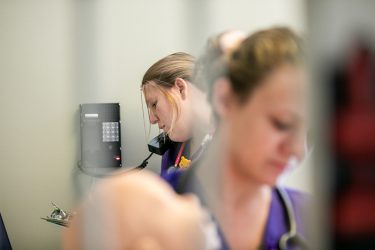
He also is fitted with an earpiece so he can take suggestions from immersive simulation facilitators to shift the direction of a scene. Brown likens what he does in the sim lab to tactics in acting in his theatre classes – “the idea that you change the intention behind what you’re doing to get a result from somebody, and that’s exactly what I’m doing with the standardized patient.
“If they (the nursing instructors) ever want to steer the scenario in a certain way, they’ll tell me in my ear,” Brown said. “They’ll say, ‘Maybe walk up to the wall or ask them another question.’”
Sapp said, “If we want the student to divert and go down a different path, we can tell the actor what we would like them to say so it kind of guides that learning path as well, which has been a real nice thing.”
Another advantage to using standardized patients, said Matus, is the versatility in the various scenarios. Although the mannequins GCU nursing students use are high-tech, they’re not quite like interacting with another human being.

“The mannequin cannot show emotion, but we can have that with the standardized patient. We can have those emotions come in, especially when we’re looking at like psychiatric and mental health issues,” Matus said.
Director of Simulation Operations Heather Ziemianski said bringing outside actors into the lab accomplishes something else: “Our students didn’t feel as intimidated having a peer in the room playing the role vs. a staff or faculty member, where they couldn’t differentiate their role.”
Matus said, “The students have responded much better to the actors vs. us playing the role because even though we were playing that role, they assumed we were there to judge or watch them. If I’m wearing the scrubs I’m also wearing to teach in, then it’s hard for them to differentiate. Am I being an instructor or am I being a patient?”
Standardized patients also participate in the debriefing room with the students, “so they’ll stay in character and share their feelings and what they perceive, so that’s helped to add to the conversation,” Ziemianski said. “Students get a real perspective on their actions and how they make somebody feel.”
“We’ve had times where they’re ambulating a patient and that actor has said, ‘You know, I didn’t feel safe, I didn’t feel like you had a hold of me,’” Matus said. “Or family members have been arguing, they’re like, you just ignored us or left us to our own devices.”
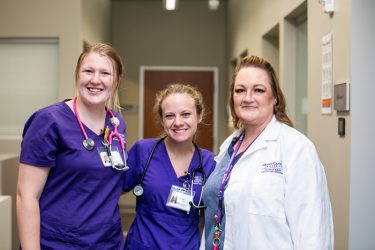
What third-level nursing student Jeanette Schreacke likes about working with standardized patients is how realistic it is.
Sadie Dunn, also a nursing major, added, “It gives us good exposure,” and Wetherell said, “It helps with our communication, definitely.”
The addition of simulated patients comes at a time when it is becoming more of a challenge to secure clinical spaces for students. For their clinicals, students go to hospitals, health care clinics and the like and participate in supervised learning sessions at those facilities.
“We are actually going to be absorbing more clinical time for the students and having them in here more often,” Matus said.
Ziemianski added that the Arizona Board of Nursing approved the college’s application over the summer for an increase in simulation hours, “so with that, the team will be developing more scenarios and there will be more opportunities in the future for standardized patients.”
GCU senior writer Lana Sweeten-Shults can be reached at lana.sweeten-shults@gcu.edu or at 602-639-7901.
****
Related content:
GCU Today and GCU Magazine: GCU, GCE work to alleviate nursing shortage
GCU Today: GCU Nursing continues to excel on national exam
GCU Today: Nursing lessons come to life in immersive simulation

